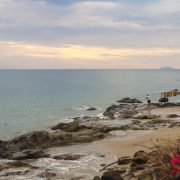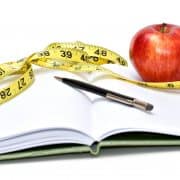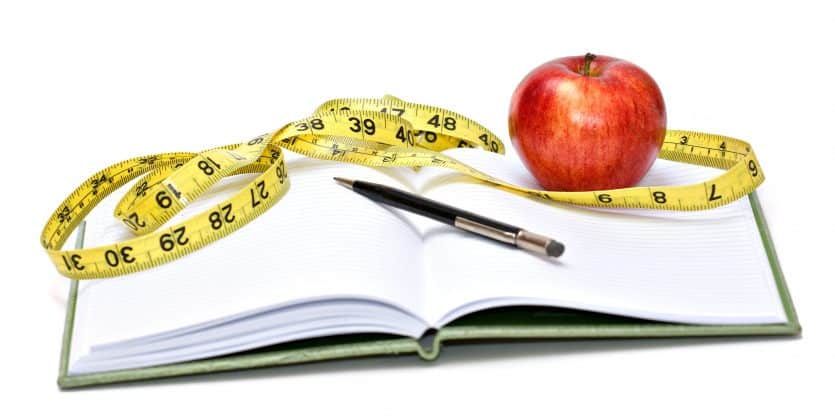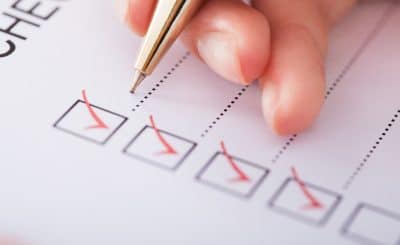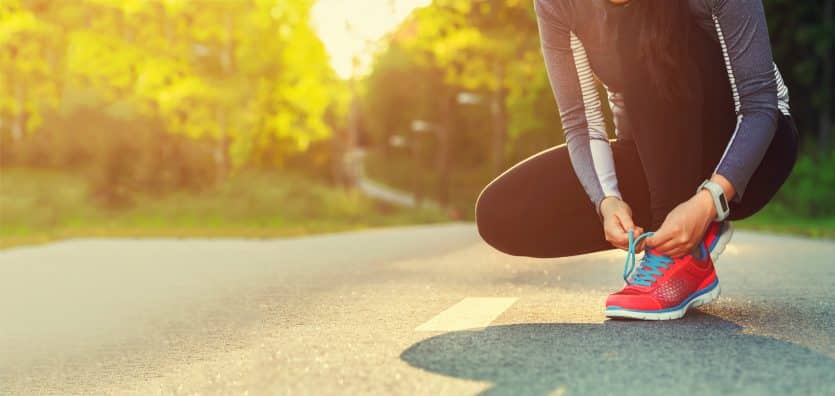The hustle and bustle of travel keeps you active and always moving. But whether for work or pleasure, long trips and quick jaunts aren’t always kind to your diet. Packing takes priority over meal prep. Whole foods are overlooked for their simpler, convenient, sugar-filled counterparts. These realities make travel nutrition tough.
But traveling doesn’t need to trip up your healthy eating. There are quick and easy ways to eat healthy while you travel. At the airport, on the road, or in a new restaurant, you can save your diet from sabotage by making smart eating choices.
Scenario 1: Air Travel
Business trips and exotic vacations often require travel by air. But the airport is not the best place to secure a healthy meal.
The stress of checking bags and waiting in line keeps you from focusing on what’s best for your body. Pretty soon, you’re starving. And your only options are to eat in the airport or on the plane. There are healthy choices for quick meals and snacks. You just need to know where to find them.
Plan Ahead: If you’ll be flying during meal time, don’t miss the opportunity to eat. Travel is tiring. Keeping a regular eating schedule sustains energy and prevents you from overeating once you arrive at your destination. Bring snacks with you in your carry-on luggage. Pack food that travels well. Dried fruit, nuts, granola, and low-glycemic protein bars take up little space and will stay fresh on the plane.
At the Airport or On the Plane: Flying can be stressful. So, don’t fill up on foods that will make you feel heavy, bloated, and sick. Airport dining and in-flight meals often feature food high in sugar, salt, and artificial preservatives. These ingredients may be tasty, but they fail to provide you the lasting satisfaction that follows a healthy meal.
Try to find an airport restaurant with a sit-down environment. Choose a balanced meal from the menu and eat it slowly. Listen to your body’s hunger cues and don’t overeat. A stomach full of good, wholesome food will provide you will steady energy throughout your flight. A stomach stuffed with unhealthy foods won’t do you any favors in the air.
If you want to eat on the plane, become familiar with the in-flight menu. Choose a meal that provides fruits or vegetables, protein, and whole grain. Making well-balanced choices in transit can help keep unnecessary snacking under control.
When choosing between complimentary in-flight snacks, look for a nutritious option. Ask a crew member if fresh fruit is available. Dry roasted peanuts provide more sustainable energy than crackers or cookies. And drink wisely, too. Water helps keep you hydrated, while too much caffeinated soda might send you running to the bathroom. (Caffeine is a mild diuretic—and if you consume too much, it could increase urine output.) Should you order an alcoholic beverage, limit yourself to one drink to avoid excess calorie consumption.
Scenario 2: Road Trip
Driving is a slower way to travel than flying. With most of the day spent in the car, you can easily lose track of time and what you’ve been eating. So, if you plan on snacking, fill up on whole foods with nutritional value— berries, bananas, and pistachios are a great place to start.
Plan Ahead: Long car rides are peppered with pit stops. But your choices for food aren’t limited to cheeseburgers and French fries. Bringing along a picnic lunch helps you take control of your travel nutrition to help you eat healthy while you travel.
Pack snacks and meals that are easy for your body to digest. This will help you feel satisfied without the bloating and bellyache caused by fast food. Baby carrots, apples, grapes, cheese, and turkey sandwiches are examples of healthy snacks to bring on the road. Full of fiber, complex carbohydrates, and protein, they provide a sustained source of energy and will keep your blood sugar from crashing later in the day. Making a meal ahead of time will help you avoid the temptation to stop for something greasy.
Picnic lunches don’t need to be eaten in the car, either. Find a rest stop or park along your route. Getting out of the car to eat and stretch your legs will break up long periods of driving with some fresh air and exercise. Walking after eating helps your body process your meal. So, stop and enjoy some time outside to ward off boredom and help digestion.
At a Gas Station or Fast Food Restaurant: Stopping at a gas station to fill your car’s tank and use the restroom doesn’t need to end with soda and candy. There are several healthy choices for snacks inside. Walk past the chocolate bars and pick up some trail mix instead. A bottle of unsweetened iced tea is a better selection than soda—regular or even diet.
Many gas stations have refrigerator boxes with pre-prepared salads, yogurt, fruit, and vegetables. These whole foods offer valuable nutrition and will keep you focused and alert on the road.
Should you find yourself in line at a drive-thru, order your meal strategically:
- Choose an entrée with grilled chicken, rather than fried.
- Exercise portion control and order off the kids’ menu.
- Skip the soda and have ice water instead.
Easy substitutions and exchanges like these will protect your diet and keep you feeling well as you travel.
Scenario 3: Dining Out
Home cooking is hard to come by on business trips and family vacations. For some, that’s OK. Trying new restaurants is an enjoyable way to spend travel time. But you may find yourself struggling to keep healthy eating habits. Challenge yourself to find ways to eat well while exploring a new place.
Plan Ahead: Knowing your schedule and planning your meals will help keep dining out from killing your diet. If there is a business dinner or trip to a fancy restaurant in your future, eat light throughout the day. Small, regular portion sizes will keep you full so you don’t overeat later. Snack on low-calorie, high-protein foods. After a day of mindful eating, you can enjoy dinner at a restaurant without all the guilt.
At the Restaurant: Once you’ve been seated, make a plan to order a balanced meal. Look for items on the menu with fresh vegetables and lean protein, like chicken or fish. Watch out for hidden calories in sauces and dressings. Order these on the side.
Chewing slowly and talking with your tablemates will allow you to hear your body’s hunger cues. Don’t feel the need to eat everything on your plate. Restaurant portions are much larger than a healthy meal—so take the leftovers with you, if you have the means to store them. Also consider sharing with a friend.
Resist the urge to treat yourself every time you dine out while you travel. When you decide to splurge, do so in moderation. Fill up on healthy food first. Skip the complimentary chips and salsa or bread. Make sure you save room for your well-balanced, nutritious meal.
Start Your Day Off Right
No matter the destination, fueling for a day of travel starts with a proper breakfast. Powering up with protein and whole grains in the morning keeps you full. It also helps you stay focused as you prepare to hit the road. Hard-boiled eggs, low-fat Greek yogurt, overnight oats, and whole-wheat toast are great for early morning getaways. Prepping your healthy breakfast the night before a big trip is easy and saves you from mindless eating come morning.
If you feel sluggish as your travels begin, steer clear of tempting, sugary energy drinks. These carbonated beverages could be loaded with caffeine, sugar, and artificial flavors. A blood-sugar spike may ultimately be followed by a dramatic drop in energy. That might make you reach for something else to eat.
Choose to perk up with a natural alternative. Coffee and tea are excellent sources of caffeine and offer an early-morning pick-me-up. As “nature’s energy drinks,” tea and coffee are much gentler on your body than caffeinated soda or sugary energy drinks. Tea and coffee are packed with antioxidants that help protect cellular health and promotes healthy immune system function. And these drinks can be easily transported in reusable bottles, making them the perfect companions for long car rides or early-morning flights.
Here’s a few great breakfast tips to help you eat healthy while you travel:
- Skip the sugary drinks and pre-packaged pastries. Instead, build your breakfast with whole, nutritious food and drink. You will have better, more sustainable energy to get where you’re going.
- If you find yourself eating breakfast in a hotel, look for healthy options at the buffet table. Sliced fruit, whole-wheat toast, eggs, low-fat yogurt, milk, coffee, and tea, are usually available. These are healthier alternatives to sugary cereal, pastries, waffles, and pancakes.
- Remember, it’s tempting to fill your plate with too much food from the buffet. Stick to proper portion sizes and a balanced meal.
- Have a coffee maker in your room? Heat some water and prepare oatmeal.
Enjoy the Journey
Good travel nutrition is often the exception, rather than the rule. But if you practice healthy eating habits at home, you will be less likely to forget them while out of the house.
Remember to indulge moderately and avoid self-deprivation. Enjoy “cheat” meals while keeping up normal exercise and nutrition. Look for local produce and fresh foods to try while touring a new place. Couple rich desserts in the evening with a day full of healthy choices.
By making smart eating decisions on the go, you can look forward to happy, healthy travels.
About the Author
Sydney Sprouse is a freelance science writer based out of Forest Grove, Oregon. She holds a bachelor of science in human biology from Utah State University, where she worked as an undergraduate researcher and writing fellow. Sydney is a lifelong student of science and makes it her goal to translate current scientific research as effectively as possible. She writes with particular interest in human biology, health, and nutrition.
















